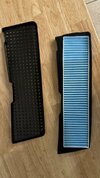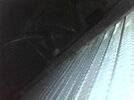I’ll add another datapoint to this fun topic.
About a month ago, I pulled the filters out, did a microban blast into the intake and onto the coils, trashed the cabin filters and rolled with just an intake filter (shown below).
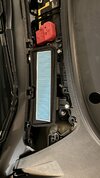
Everything was wonderful for nearly a month. No smell whatsoever. Then it rained. And the smell came back. With no filters in.
It’s not the intake filter either. I have the rubber hood guards installed and that area stayed almost entirely dry with the exception of a couple drops. I checked each time I went out in the rain.
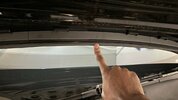
I’ve believed for years that it was the filter and I’m pretty sure now that I’ve been wrong. the filters can definitely stink, but they don’t appear to be the
source of the problem. It seems like they either absorb odors or they soak up stagnant water that has already started to stink.
I did the “climate to HI for an hour” deal twice. I just turned it off and there is water dripping from the bottom. It’s been over 24 hours since it was in the rain and the exterior is completely dry. The car is clearly holding onto water
somewhere inside of it.
The only thing that makes sense to me at this point is that water sits in the drain pain downstream of the coils (maybe because debris slows down the drainage?). And maybe running the fan on HI creates enough pressure to force the water out, but whatever Tesla does after each drive creates negative pressure somehow that draws water back up into the filter compartment? It’s just a guess obviously but it makes what Adam Davenport’s videos show make some sense.
So, that’s what I’m going with as a working theory (because frankly, trying things is all I have left lol). I’m going to do a coil cleaning, and make sure I clean out the box well, I got a cheap endoscope and there appears to be some debris at the bottom:
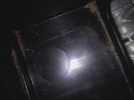
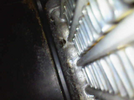
I’ll put in new (inexpensive) filters, but I’m going to wrap the bottom of the first one with either silicon tape or duct tape to see if that keeps it from soaking up drain water. I don’t want to get the “HEPA style” ones because the one I tried in the past restricted airflow way too much.
Also, leaving the metal tray that came with the intake filter in place (left side of the pic below). Hoping this along with the weather strip on the hood keeps larger pieces of debris out of the system. We’ll see how this goes.
